When you pay a visit to Mount Vernon, the first home of the first president of the U.S., you get a fascinating glimpse into life in the late 1700s. George Washington, the only U.S. president who didn’t live in the current White House, owned the house and sprawling farmland of Mount Vernon. It’s been restored as closely as possible to the time he lived here with his wife Martha. If you are in the Washington, DC area, this home is just across the Potomac River in the state of Virginia. It’s well worth your time for many reasons. With all the tours and exhibits available, you are sure to find something of interest.
The Mansion on the Potomac
The main attraction is the Mansion itself, which sits on a bluff above the river. You can relax on the porch and enjoy the view, just as Washington’s guests must have done.
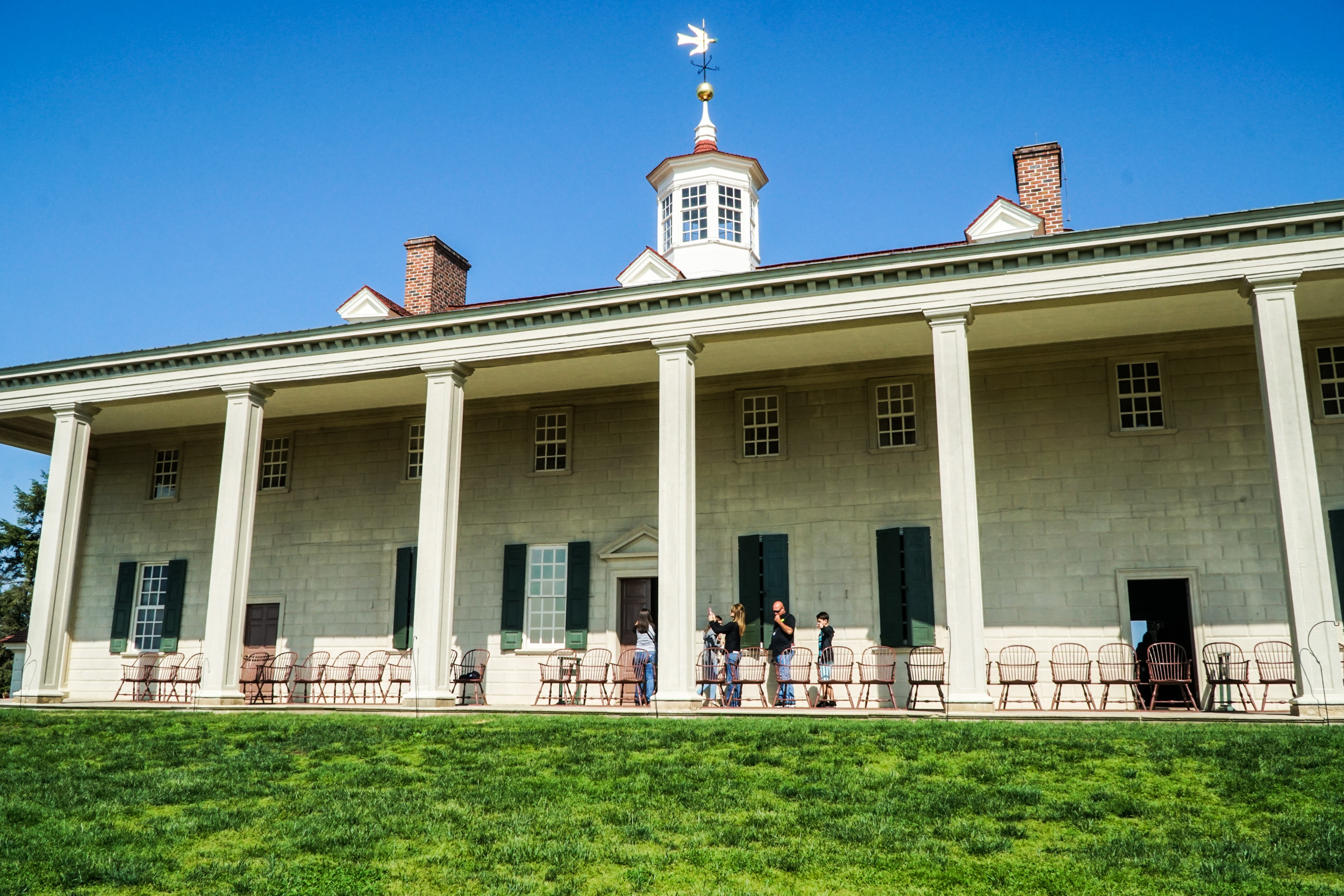

 If you’ve seen photos of Mount Vernon, you’ve probably seen the back of the Mansion. This is where horses and carriages arrived and would be where many guests were greeted. Washington was quite particular about the spacious lawn in the backyard. In his day, a lawn was a status symbol, as it wasn’t a cash crop but was solely for decoration. He was proud of this expanse of green.
If you’ve seen photos of Mount Vernon, you’ve probably seen the back of the Mansion. This is where horses and carriages arrived and would be where many guests were greeted. Washington was quite particular about the spacious lawn in the backyard. In his day, a lawn was a status symbol, as it wasn’t a cash crop but was solely for decoration. He was proud of this expanse of green.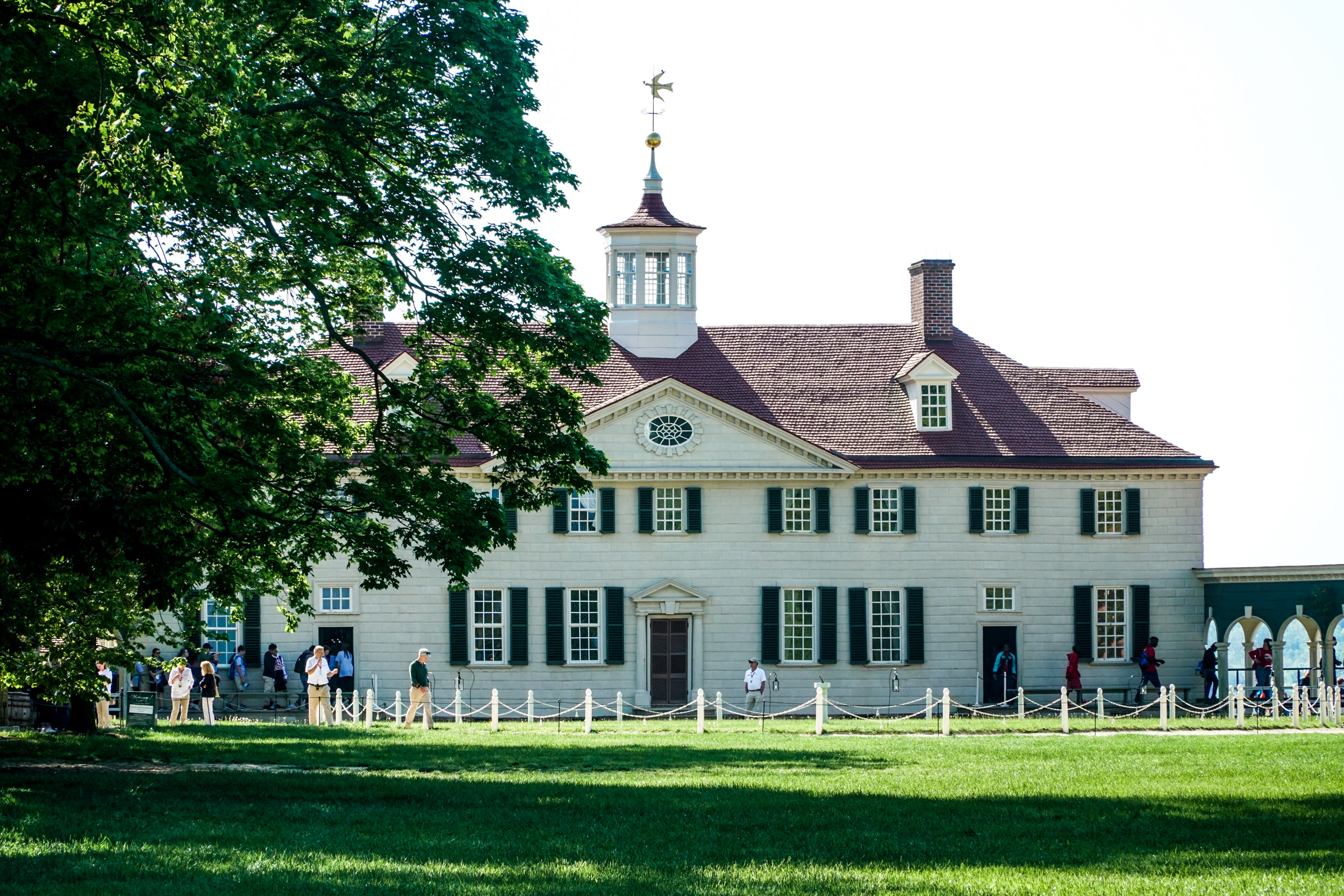
When you enter the Visitor’s Center, you can purchase tickets for timed entrance tours of the house as well as other tours. 
The Gardens
From here you can enter the garden and grounds. Keep an eye out for people dressed in 1780’s garb. You can wander through the gardens as you make your way to the Mansion. 


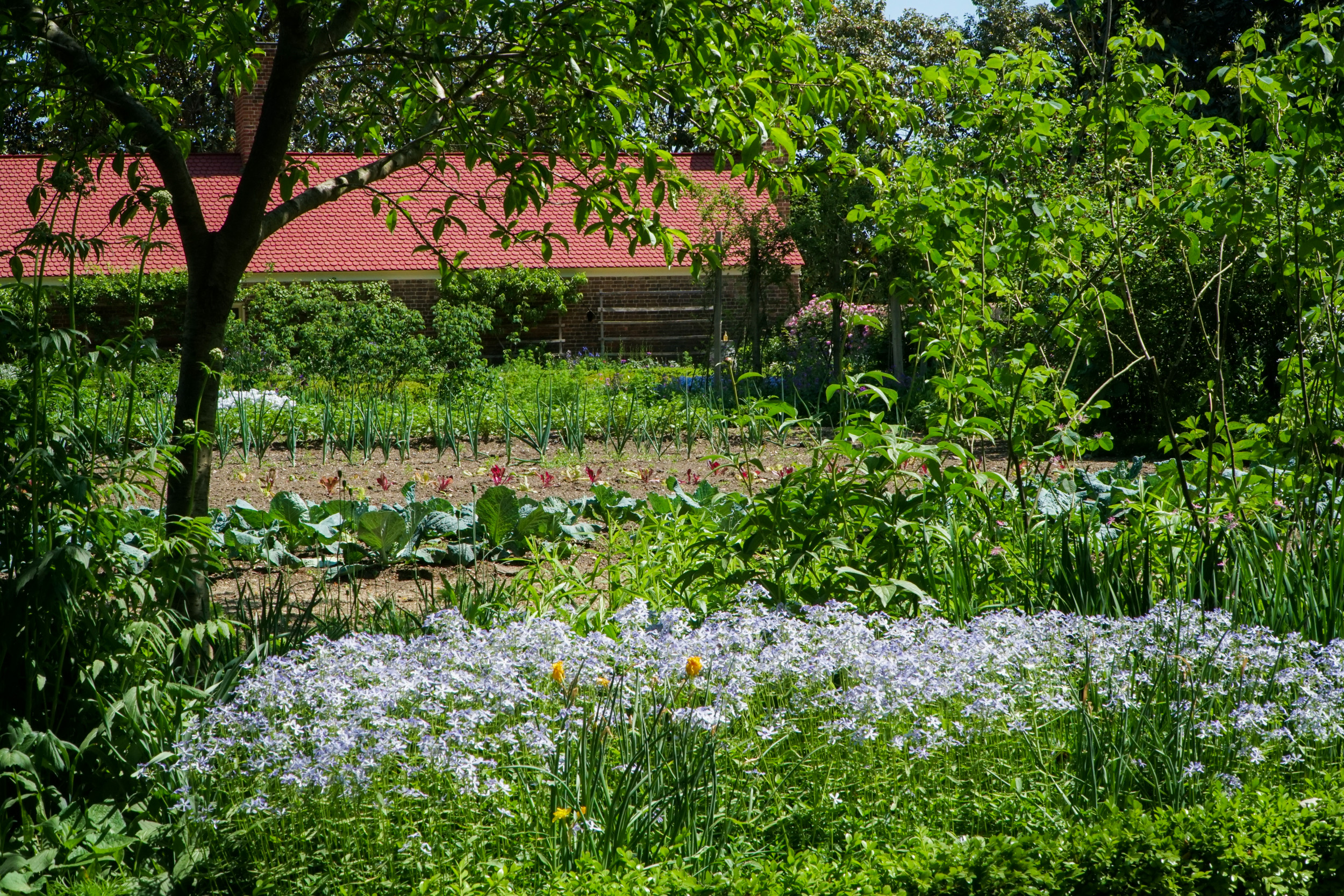 Learning about the Slaves Who Lived at Mount Vernon
Learning about the Slaves Who Lived at Mount Vernon
We signed up for a tour on the enslaved people of Mount Vernon. This highlights the lives and contributions of the enslaved people who built and operated Mount Vernon. You will see a recreation of the slave quarters and the overseers house. 

 Our guide told us stories of the slaves that have been gleaned from white people’s journals and publications, as the slaves of course were not allowed to write. We heard these remembrances as we walked around the outbuildings near the Mansion.
Our guide told us stories of the slaves that have been gleaned from white people’s journals and publications, as the slaves of course were not allowed to write. We heard these remembrances as we walked around the outbuildings near the Mansion. 
At the time of Washington’s death, about 300 slaves ran the farm. Our guide showed us this illustration. 
George Washington’s Tomb
Next we toured the Mansion, where no photos are allowed. Then we headed to the forest to find Washington’s tomb and the monument to the enslaved people. 

 Walking on the Plantation Grounds
Walking on the Plantation Grounds
The grounds are beautiful, and we even found sheep. 

 The Two Museums
The Two Museums
After a delicious lunch at the restaurant next to the Visitor’s Center, we headed to the two museums. One is dedicated to the enslaved people of Mount Vernon. Only first names are known, so that is what you see inscribed on the glass doors. 
 The museum on the life of George Washington is fascinating. I didn’t realize he raised 100 kinds of crops on this farm.
The museum on the life of George Washington is fascinating. I didn’t realize he raised 100 kinds of crops on this farm. 

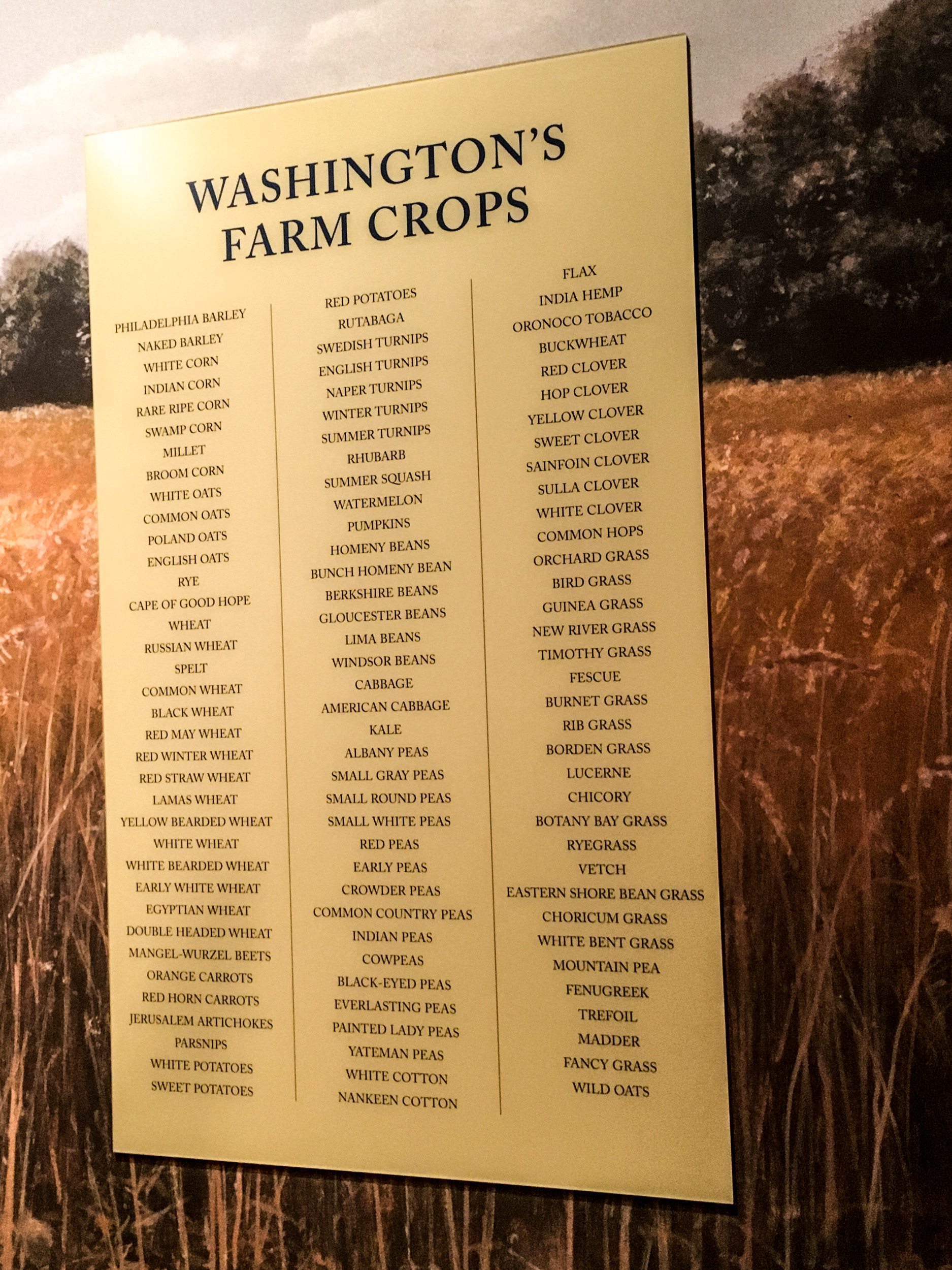

 Children can delve into craft projects in this room.
Children can delve into craft projects in this room. 
 The Restoration of Mount Vernon
The Restoration of Mount Vernon
You may wonder what happened to Mount Vernon when Washington died. He had no children of his own, but relatives took over the running of the farm. After a while, hard times hit and the Mansion fell into disrepair. Here’s a photo of the back of the house in the 1860s. 
Fortunately, funds were raised to restore the house. The Mount Vernon Ladies’ Association took over then and still runs the property today. Restoration and archeology are ongoing. Plenty of opportunities are here to find out what it was like to live at Mount Vernon long ago.
Practical Information
Hours: Open 9:00 to 5:00 April through October; 9:00 to 4:00 the rest of the year.
Tickets: $20 for adults, $12 for children, under age 6 free. You can buy tickets online to insure you get a timed
entrance ticket to the Mansion on the day you plan to go.
Transportation: You can travel by boat or Metro. Take the Huntington Line Metro to the Huntington station, then take the connector bus for a 20-minute ride to Mount Vernon.
For more information on tours and the grounds and museums, visit the excellent Mount Vernon website.
PLANNING A TRIP TO WASHINGTON DC?
For more information and to plan a trip, visit the National Park site. And these guides have so much helpful information on visiting Washington, D.C.
This post contains affiliate links. Clicking on them may result in a commission being paid if you purchase afterwards. This is at no extra cost to you. All opinions are always my own.









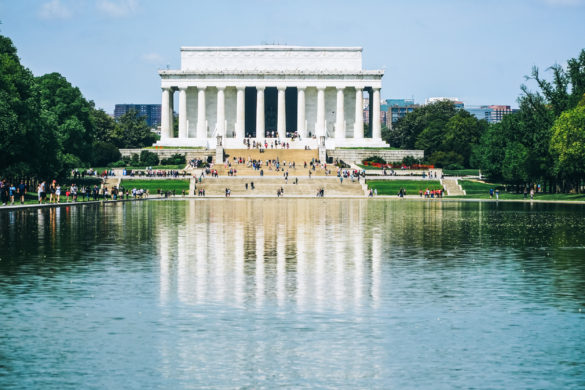
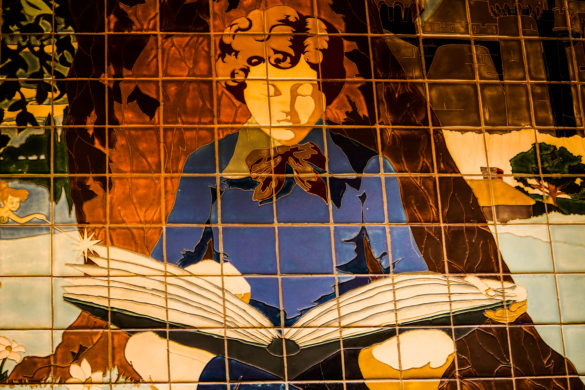

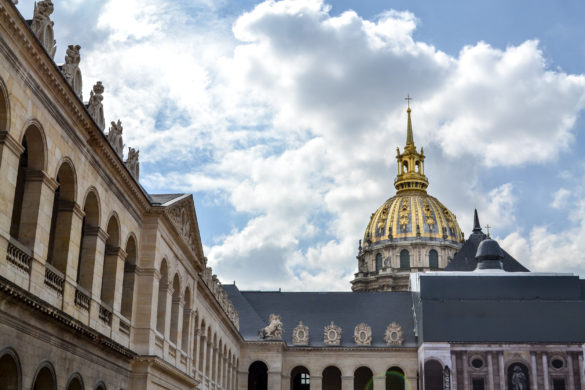



31 Comments
We visited Mt. Vernon I want to say about 7 years ago and it is one of my favorite Virginia tourist spots. The kids had a blast more so than in Williamsburg though I do love the peanut soup in Williamsburg. Have a lovely week.
http://travelingbugwiththreeboys-kelleyn.blogspot.com/2018/07/sardinia-pt-1.html
While reading your post, I realize I know nothing about the President’s life other than what was repeated in our school books. He must’ve been very happy when he stepped down from office, giving a sigh of relief that leadership was going to transfer peacefully to Adams.
Washington’s house is simple and straightforward, like I imagined him to be.You gave a great summary of their daily life back then with horse stable and large vegetable garden. Also the slaves quarters. Had no idea so many worked and lived there. You two in between the sculptures is a fun shot! Thank you, Sharon, for giving such a clear view of the Washingtons for All Seasons!
Have a wonderful week!
Such an amazing home and location!
Beautiful post – pinned and shared.
What a wonderful trip. I must bookmark this one too.
Worth a Thousand Words
So grand and impressive!
It’s always fascinating to visit the home of one of the great figures from history, visualising what their lives were like in the place they trod. I am glad there is so much about those enslaved in the house and grounds too, I imagine it would have been glossed over for many years but so important to recognise for anyone visiting today. Thanks for linking up with #citytripping
I didn’t know that G.W. didn’t live in the W.H! I guess it wasn’t built then yet! How sad though that it took so many slaves to maintain the property for all of 5 people! Would love to visit though! #CityTripping
beautiful house! #citytripping
I would love to visit Mt. Vernon. It is definitely on my list of things to do on our next trip to DC. #wanderfulwednesday
My family didn’t travel much when I was growing up but my aunt and uncle took me to Mt. Vernon when I was in junior high school. And I was just amazed and overwhelmed. History was my favorite subject and I just couldn’t believe someplace like this existed. I’ve never been back but I think maybe it’s time. Thanks for bringing back such good memories!
I have been there and also to Jefferson’s home, Monticello, also in Virginia (near Charlottesville). Both places are very much worth visiting. I’m so glad the slave histories are a bigger part of the narrative now – long overdue. Nice photos. #TheWeeklyPostcard
I enjoyed a visit to Mount Vernon when I was in DC a few years ago. Such an historic place. The card showing the ratio of free to enslaved people is quite shocking isnt it? Thanks for sharing on #FarawayFiles
The day we visited Mt Vernon it rained, which did put a bit of a dampener on it (pun intended) but I agree with you that the estate is well worth a visit. My only complaint was the crowds. They are handled well, with timed tickets but it still reduces the experience.
What an interesting trip. I especially like the look of those gardens, pretty!
#WeekendWanderlust
Wow, I completely forgot that I took a trip here in 8th grade, but your photos of the outside of Mount Vernon took me right back to that visit. I remember being amazed by that graphic of the slaves, too. I wish I had the itinerary or pictures to remember what else we saw on that trip. #TheWeeklyPostcard
What a wonderful photo tour of Mt Vernon ~ divine!
Happy Day to you,
A ShutterBug Explores,
aka (A Creative Harbor)
I have visited Mount Vernon several times and learn something new each time I visit. The research that was carried out on the farm in its day with respect to crops and techniques is fascinating.
Mount Vernon one of my favorite places to visit when we go to Washington DC. I think we visited this estate at least 4 times so far, but I never get bored of going there. Every time we go, we discover something new. During one of our visits, they had new born piglets in the farm area. They were adorable! #TheWeeklyPostcard
This is the first time I learn about where George Washington lives and the mansion looks simple, elegant and peaceful. I would like to visit there some day and nice to know about their way of life at Mount Vernon in the past. @knycx.journeying
I like places with historic references 🙂 lovely article you have written 🙂
Great info, Sharon. It’s a very impressive building and the history of the workers along with Washington would be fascinating. I’m yet to visit DC but I will make the effort to get over to Mount Vernon when I do. 🙂
This looks a great place to visit to delve into the history of America and George Washington’s life. We haven’t been to DC yet, but this looks like a must see place to go when we do! The grounds look beautiful, especially on a sunny day!
I had visited in February with plenty of snow around.This gives a different view of the place,Loved reading this post especially about the crop.
His home looks simple and beautiful, I would love to tour inside it. I don’t know a lot about American history but I could learn a lot from this.
A fascinating place to visit and insight into the man who became the first president. I’m glad there’s a big section on the slavery connected to the house. Seeing all those names really puts it into prespective…300 people working there against their will is mind-boggling. Thanks for linking #citytripping
If 300 slaves worked to maintain the presidents quarters with surroundings, it must provide a lot of (paid) jobs nowadays! I didn’t know that lawn was a sign of prestige but I guess it’s much easier to maintain nowadays with a fancy mower 😉
This is a great tour, I’m a sucker for history and period costumes so this would be a trip suited to me. Pinned! #feetdotravel
It really feels like I have travelled through time with the help of your photos! What a wonderful place to learn about an important part of America’s history. I must admit it makes me a little emotional learning about slavery, but I appreciate it being spoken about rather than downgraded.
Love history and museums! We just took the kids to the Tsunami museum in Thailand, what a waste of time that was!
If they are done right with enough funding you can really learn some amazing facts about your past! Thanks for the article.